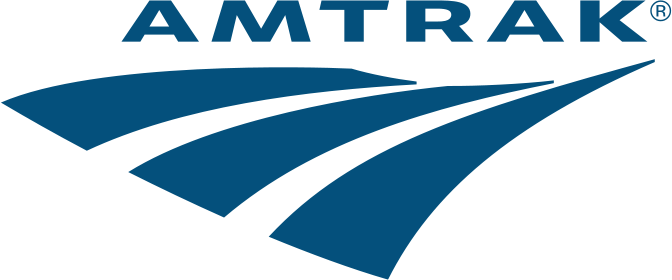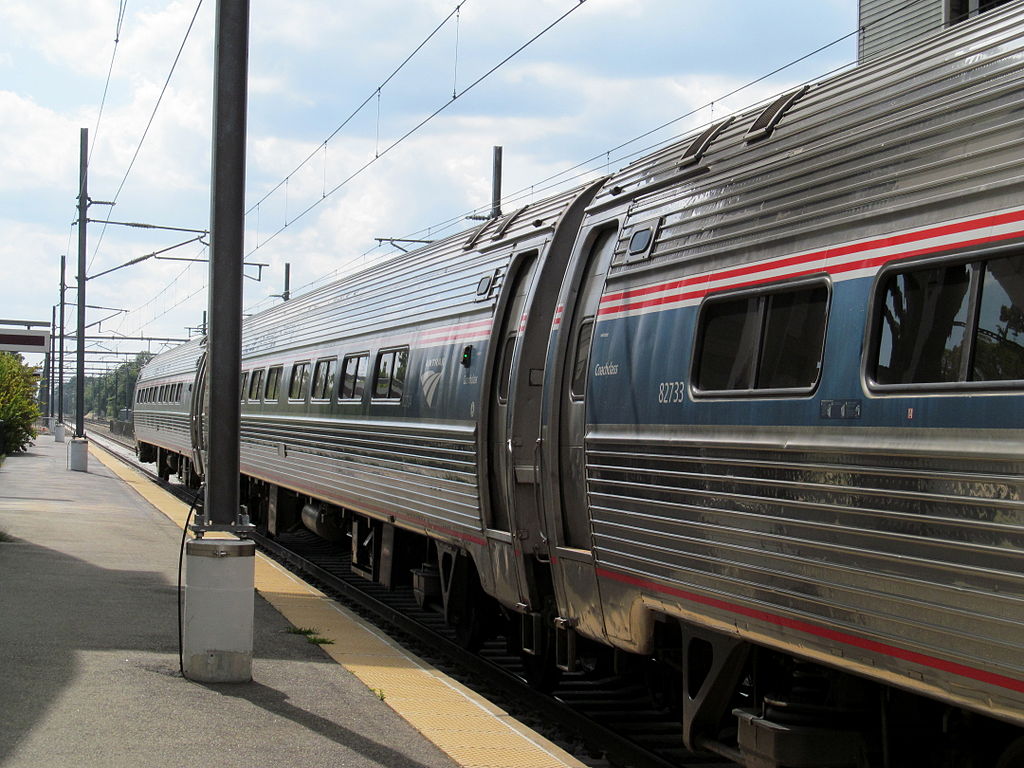Prototype History: Amfleet is a fleet of single-level intercity railroad passenger cars built by the Budd Company for American company Amtrak in the late 1970s and early 1980s. Budd based the Amfleet design on its earlier Metroliner electric multiple unit. An initial order for 57 cars in 1973 to supplement the Metroliners on the Northeast Corridor grew to two orders totaling 642 cars, sufficient to reequip all the services on the Northeast Corridor and many other routes around the United States. The first 492 cars, known as Amfleet I and completed between 1975–1977, were designed for short-distance service. A second order of 150 cars, known as Amfleet II and completed between 1980–1983, were designed for long-distance service. They were the last intercity passenger cars built by Budd.
Car types include both long- and short-distance coaches, cafes, club cars, and lounges. Since the construction of the cars multiple rebuildings have eliminated the club cars and lounges in favor of business class cars, club-dinettes, and "diner-lite" dining cars. Amtrak experimented with sleeping car conversions in the 1970s but did not pursue the idea. The Amfleet I has vestibules on both ends of the car for faster unloading, while the Amfleet II has a single vestibule. The Amfleet II also has slightly larger windows.
The Amfleets were the first new locomotive-hauled intercity cars ordered by Amtrak and the first such cars built in the United States since 1965. Their introduction in the mid-1970s led to improved reliability for Amtrak's trains and ridership gains. As of 2015, Amfleet cars are used extensively in the eastern and mid-western United States, forming the backbone of Amtrak's single-level fleet.
From Wikipedia
Car types include both long- and short-distance coaches, cafes, club cars, and lounges. Since the construction of the cars multiple rebuildings have eliminated the club cars and lounges in favor of business class cars, club-dinettes, and "diner-lite" dining cars. Amtrak experimented with sleeping car conversions in the 1970s but did not pursue the idea. The Amfleet I has vestibules on both ends of the car for faster unloading, while the Amfleet II has a single vestibule. The Amfleet II also has slightly larger windows.
The Amfleets were the first new locomotive-hauled intercity cars ordered by Amtrak and the first such cars built in the United States since 1965. Their introduction in the mid-1970s led to improved reliability for Amtrak's trains and ridership gains. As of 2015, Amfleet cars are used extensively in the eastern and mid-western United States, forming the backbone of Amtrak's single-level fleet.
From Wikipedia
Road Name History: The National Railroad Passenger Corporation, doing business as Amtrak, is a passenger railroad service that provides medium- and long-distance intercity service in the contiguous United States. Founded in 1971 through the government-sponsored consolidation of most of the remaining U.S. passenger rail companies, it is partially government-funded yet operated and managed as a for-profit corporation.
Amtrak operates more than 300 trains each day on 21,300 miles (34,000 km) of track with select segments having civil operating speeds of 150 mph (240 km/h) and connecting more than 500 destinations in 46 states in addition to three Canadian provinces. In fiscal year 2015, Amtrak served 30.8 million passengers and had $2.185 billion in revenue, while employing more than 20,000 people. Nearly two-thirds of passengers come from the 10 largest metropolitan areas; 83% of passengers travel on routes shorter than 400 miles. Its headquarters is at Union Station in Washington, D.C.
The name "Amtrak" is a portmanteau of the words "America" and "trak", the latter itself a sensational spelling of "track".
Read more on Wikipedia.
Amtrak operates more than 300 trains each day on 21,300 miles (34,000 km) of track with select segments having civil operating speeds of 150 mph (240 km/h) and connecting more than 500 destinations in 46 states in addition to three Canadian provinces. In fiscal year 2015, Amtrak served 30.8 million passengers and had $2.185 billion in revenue, while employing more than 20,000 people. Nearly two-thirds of passengers come from the 10 largest metropolitan areas; 83% of passengers travel on routes shorter than 400 miles. Its headquarters is at Union Station in Washington, D.C.
The name "Amtrak" is a portmanteau of the words "America" and "trak", the latter itself a sensational spelling of "track".
Read more on Wikipedia.
Brand/Importer Information: Bachmann Industries (Bachmann Brothers, Inc.) is a Bermuda registered Chinese owned company, globally headquartered in Hong Kong; specializing in model railroading.
Founded in Philadelphia, Pennsylvania, the home of its North American headquarters, Bachmann is today part of the Kader group, who model products are made at a Chinese Government joint-venture plant in Dongguan, China. Bachmann's brand is the largest seller, in terms of volume, of model trains in the world. Bachmann primarily specializes in entry level train sets, and premium offerings in many scales. The Spectrum line is the high quality, model railroad product line, offered in N, HO, Large Scale, On30, and Williams O gauge all aimed for the hobbyist market. Bachmann is the producer of the famous railroad village product line known as "Plasticville." The turnover for Bachmann model trains for the year ended 31 December 2006 was approximately $46.87 million, a slight increase of 3.36% as compared to 2005.
Founded in Philadelphia, Pennsylvania, the home of its North American headquarters, Bachmann is today part of the Kader group, who model products are made at a Chinese Government joint-venture plant in Dongguan, China. Bachmann's brand is the largest seller, in terms of volume, of model trains in the world. Bachmann primarily specializes in entry level train sets, and premium offerings in many scales. The Spectrum line is the high quality, model railroad product line, offered in N, HO, Large Scale, On30, and Williams O gauge all aimed for the hobbyist market. Bachmann is the producer of the famous railroad village product line known as "Plasticville." The turnover for Bachmann model trains for the year ended 31 December 2006 was approximately $46.87 million, a slight increase of 3.36% as compared to 2005.
Item created by: gdm on 2018-02-26 10:07:30
If you see errors or missing data in this entry, please feel free to log in and edit it. Anyone with a Gmail account can log in instantly.
If you see errors or missing data in this entry, please feel free to log in and edit it. Anyone with a Gmail account can log in instantly.











